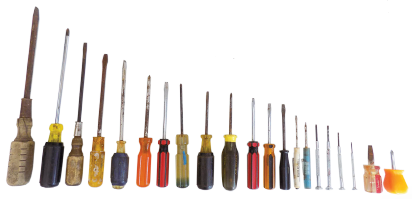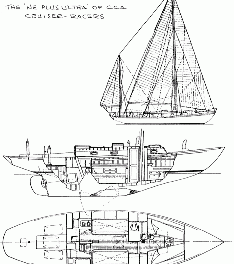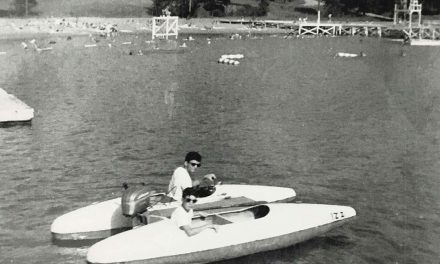Tricing is a quick fix for a multitude of dangling dinghy issues.
Issue 135: Nov/Dec 2020

Drew’s dinghy, triced using criss-crossed lines, is snugged up to the boat’s transom.
For a sailor on the hook, few things are more convenient than a dinghy on davits. As soon as the anchor is set, the family car can be lowered to whisk the kids to the beach, run errands, or visit a neighboring boat for an afternoon chat. When evening falls, the dinghy is easily raised above the chop, safe from chafe, theft, and fouling.
But sailboats are also used for sailing. And underway, that dinghy hanging from davits can be its own worst enemy, swinging back and forth, chafing tubes, chafing lifting lines, and putting strain on lifting eyes. A dinghy not secured to prevent movement can also strain the davit until stress cracks form or bolts loosen. Using a simple strap or two to pull the tender tight against the transom or davits is a popular remedy, but a more seamanlike approach is to use tricing lines or straps, which not only stabilize the dink but provide vital redundancy.
Vital redundancy, because dinghy lifting eyes fail. This is why it’s worth the extra time and effort it takes to rig tricing lines. How common are such failures? Consider the vulnerabilities. Wooden dinghy transoms rot. Inflatable dinghies are subject to pressure loss, and tube pressure is the only thing retaining some dinghy floors. If lifting eyes are attached to the floor, the dink will fall. Lifting eyes are commonly glued to the tubes, and glued-on rings fail. They often distort tubes when in use, and chafe near the rings is often a problem.
“But I own a RIB with stainless steel eyes bolted to the floor!” Even RIBs are not immune to lifting eye failure. Shackles work loose and, especially in saltwater environments, crevice corrosion attacks stainless steel bolts attaching stainless steel eyes.
I recently read about a man-overboard incident that was a result of the victim trying to repair a failing lifting tackle while underway. I once experienced the failure of an under-engineered spreader supporting the dinghy bow. Without warning, while I was singlehanding under spinnaker, the bow of the dinghy dropped to the water. Fortunately (and while tethered to the mothership), I was able to successfully clip a painter to the bow ring, release the stern tackle, and then tow the dinghy to shelter.
I’ve triced the dinghy every time since—well, nearly every time. A few years later, complacency crept in and I skipped the tricing for a short daysail. This time, the sling attaching the stern tackle chafed through on a rough spot on the casting. Because it dropped only part way, skimming the water, I was able to scamper down the sugar scoop steps (again, wearing a tether!), attach a hand billy, and haul it back into place. This time the lesson stayed learned.
Tricing lines can run longitudinally, from the top of the davit, under the boat, and to the base of the same davit. However, depending on the width of the davits relative to the dinghy, lines triced in this way can be vulnerable to slipping off the ends of the dinghy. Also, tricing this way means the lines offer no support to the center underside of the dinghy.
I prefer to trice lines so that they cross beneath the dinghy, starting at the tip of one davit, passing around the outboard side of the dinghy and crossing underneath to the base of the other davit, providing ample support for the floppiest of deflated dinghies. Additionally, the diagonal rigging braces against side-to-side movement. Pulled up tight this way, the dinghy doesn’t move a millimeter in the roughest of seas.
Yes, tricing takes a few minutes each time we use the tender. But then we’re worry-free for every sail. We’ve done the losing-a-dinghy dance. No more. For our dinghy, it’s a belt and suspenders.
Good Old Boat Technical Editor Drew Frye draws on his training as a chemical engineer and pastimes of climbing and sailing to solve boat problems. He cruises Chesapeake Bay and the mid- Atlantic coast in his Corsair F-24 trimaran, Fast and Furry-ous, using its shoal draft to venture into less-explored waters. He is most recently author of Rigging Modern Anchors (2018, Seaworthy Publications).
Thank you to Sailrite Enterprises, Inc., for providing free access to back issues of Good Old Boat through intellectual property rights. Sailrite.com





